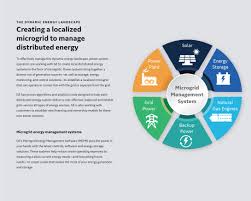The energy landscape is continually evolving, driven by a growing demand for power, increasing concerns about environmental sustainability, and technological advancements. In this article, we will delve into the dynamic world of energy sources, focusing on the critical role that gas and electricity play in meeting the world’s energy needs.
Gas as an Energy Source
Natural gas is a versatile and vital component of the global energy mix. It is primarily composed of methane and is sourced from underground reservoirs. Here are some key aspects of natural gas as an energy source:
- Cleaner Fossil Fuel: Natural gas is considered a cleaner-burning fossil fuel compared to coal and oil. It produces fewer greenhouse gas emissions, making it an essential transitional energy source as the world moves toward cleaner alternatives.
- Versatility: Natural gas is used for various purposes, including electricity generation, heating, and as a fuel for transportation. Its adaptability makes it a valuable energy source in both residential and industrial settings.
- Abundant Reserves: Natural gas reserves are vast and widely distributed around the globe. This ensures a stable supply and competitive pricing.
- Liquefied Natural Gas (LNG): The liquefaction of natural gas into LNG enables its transportation over long distances, promoting international trade and energy security.
- Challenges: Despite its advantages, natural gas extraction and transportation can lead to methane leaks, a potent greenhouse gas. Addressing these challenges is crucial to maximizing the environmental benefits of natural gas.
Electricity Generation
Electricity is a fundamental form of energy that powers our homes, industries, and technological advancements. It is generated from various sources, and the choice of generation method has profound implications for sustainability and environmental impact. Here are some primary sources of electricity generation:
- Fossil Fuels: Historically, coal and natural gas have been significant sources of electricity. However, the environmental impact, including carbon emissions and air pollution, has led to a shift away from coal in favor of cleaner alternatives.
- Renewable Energy: Renewable sources such as solar, wind, hydro, and geothermal power are gaining prominence. They produce electricity with minimal environmental impact and are key players in the transition to a more sustainable energy future.
- Nuclear Power: Nuclear power plants use controlled nuclear reactions to generate electricity. While they produce low greenhouse gas emissions, concerns about safety and nuclear waste disposal persist.
- Hydropower: Dams and water turbines generate electricity from flowing water, offering a consistent and sustainable energy source. However, the environmental impact on aquatic ecosystems and land use must be considered.
- Solar and Wind: Solar panels and wind turbines harness energy from the sun and wind, respectively. They are rapidly expanding due to their renewable and clean energy attributes.
- Geothermal Energy: Geothermal power plants tap into the Earth’s heat to produce electricity. They are highly reliable and generate minimal emissions.
The Future of the Energy Landscape
As the world grapples with climate change and the need for sustainable energy solutions, the energy landscape is undergoing a transformative shift. The transition to cleaner energy sources and the development of advanced technologies are key elements of this transformation.
The integration of renewable energy sources, improved energy storage, and a more efficient electricity grid are central to shaping a sustainable energy future. Natural gas, with its lower emissions compared to other fossil fuels, plays a transitional role in the journey towards cleaner energy.
In conclusion, the energy landscape is evolving to address the dual challenges of meeting growing energy demand while reducing environmental impact. Gas and electricity sources are central to this transformation, and their responsible use and development are critical in the pursuit of a more sustainable and resilient energy future.
